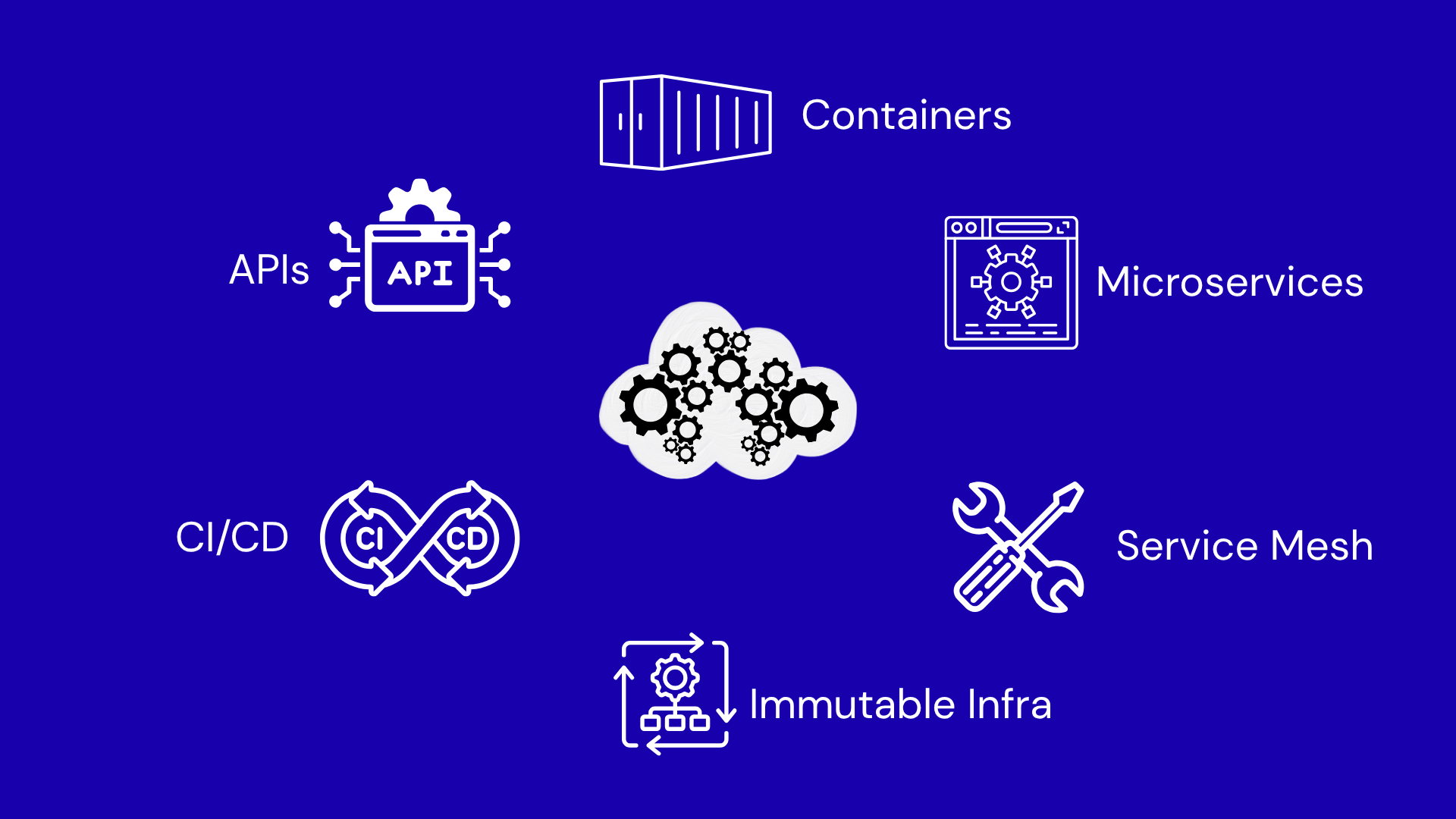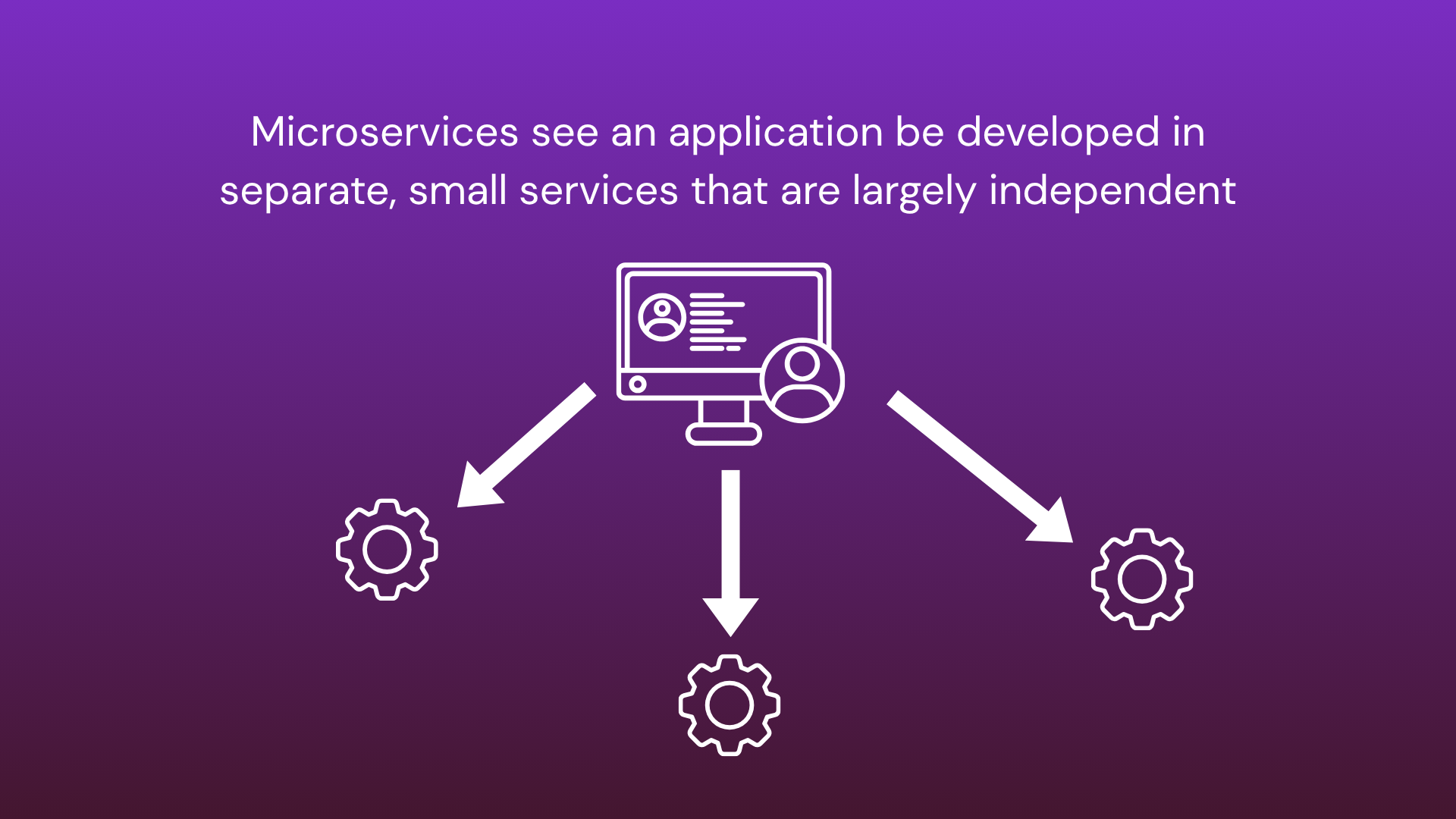Cloud Native Architecture Guide: Benefits, Principles and More



What is Cloud Native Architecture?
Cloud native is the act of building, deploying, and managing applications within cloud computing, differing from a cloud-based approach that sees applications utilizing cloud services rather than being built with them. In that sense, cloud native architecture is the guiding framework of a cloud native approach, enabling systems to meet their ultimate goal of operating at scale and with automation. This not only includes tools and technology, but also philosophies and principles that keep applications cloud native and working within their goal.
Cloud native architecture sees applications being designed to work with cloud concepts, being built as independent services rather than a monolithic approach. A typically cloud native architecture is comprised of:
- Containers
- Microservices
- Service Mesh
- Immutable Infrastructure
- CI/CD
- APIs

These components encourage service and application independence and automation, allowing applications as a whole to scale easier, work flexibly across different cloud environments, stay resilient to failures and attacks, and more!
With technological giants like Amazon Web Services (AWS), AirBNB, Google Cloud, and Netflix using the cloud native approach, many organizations are designing their applications specifically to reap the benefits of cloud early on. That being said, what exactly goes into a cloud native architecture?
Cloud Native Application Architecture Components
As mentioned above, the typical cloud native application architecture consists of different parts and services that promote application independence, scalability, and flexibility. These components include, but are not limited to:
Containers
A container is an application that has been packaged with all of its dependencies through a process called containerization. Containers and containerization play an important role in facilitating a cloud native build because it provides flexible and portable environments for applications. Containers can work competently across multiple cloud environments and still scale consistently. For a modern cloud native architecture, containers are an absolute necessity in operations.
Microservices
The microservices philosophy sees applications being built as independent, small services, or microservices! Each service represents a piece of the application, with these services being largely isolated and having their own codebases.
In order to facilitate a cloud native architecture that promotes scalability and flexibility, applications must operate with microservices. However, this isn’t a bad thing! Microservices enable a lot of the philosophies that the cloud native approach strives for: flexibility, scalability, fault tolerance, automated CI/CD, increased tech adoption, and so much more.

Service Mesh
With independent services operating at the same time, management and communication between services can be a struggle. A service mesh is a software layer that handles service and application communication. Composed of containerized microservices, the service mesh is instrumental in everything from communication, including traffic control, service monitoring and logging, and other tracking. The service mesh is also responsible for service discovery, allowing for streamlined client-side connection.
Immutable Infrastructure
Immutable infrastructure refers to servers that are never modified, with any modifications prompting the creation of a new server based on a common image of the base server. An unchanging infrastructure provides tons of consistency and reliability, with the predictable deployment it provides proving to be extremely beneficial for a cloud native application.
Continuous Integration Continuous Delivery (CI/CD)
Continuous integration and continuous delivery / deployment refers to software practices that revolve around standardization and deployment. Continuous integration (CI) regularly merges code with code from the rest of an organization, proving to be extremely reliable when working with microservices.
Continuous delivery (CD) describes practices that aim to keep an application in a deployable state, enabling quick testing and changes to deliver fast results.
CI/CD, therefore, sees changes and code merge frequently, with testing occurring often (typically automated) to ensure that software changes are pushed on time. For teams working with cloud-native applications, automated software changes can be instrumental in making sure your services are operating on the same page.
APIs
APIs enable further communication between software components, allowing applications and services to communicate and operate within a set of definitions.
Cloud native architecture components primarily revolve around the independent service aspect of a cloud native approach, with plenty of tools and solutions functioning to facilitate communication and management between services.
Cloud Native Architecture Principles
If a cloud application has microservices and containers, it should automatically be considered cloud native right? Well, not necessarily.
The Cloud Native Computing Foundation (CNCF) has defined 5 cloud native architecture principles essential to leveraging the most that cloud computing has to offer. In essence, cloud native architectures should be:
- Distributable, able to support horizontal scaling and loosely coupled services required to encourage flexibility and scalability
- Observable, application requests should span across multiple services and can be tracked, monitored, and logged simultaneously for bookkeeping purposes
- Portable, with applications being able to bounce from one cloud native environment to another, seamlessly taking full advantage of cloud resources
- Interoperable, able to operate seamlessly through the use of APIs
- Available, guaranteeing a graceful failure process or transfer of operations to a similar service
Outside of these principles defined by the cloud native foundation, cloud native architectures typically have common traits between them, no matter the application or company size. Most, if not all cloud native architectures, should be:
- Scalable
- Resilient
- Secured
- Future-Proof
- Automated
With architecture components themselves alluding to this. Parts like microservices and containerization within cloud native architectures promote scalability, resilience, and futureproofing, allowing applications to grow and adapt to changes over time. Security and automation come as a result of factors like CI/CD, APIs, and immutable infrastructure, providing an unyielding environment that is self-sustaining through enhanced service communication and automation.

Cloud Native Benefits
Why is cloud native architecture important? Cloud native architecture is designed specifically for ever-growing applications, ensuring that they operate in all environments and under all conditions. With cloud computing resources, cloud native applications become future-proof, scaling as an organization grows and withstanding the test of time, potentially even becoming the next Google or Amazon! The importance of cloud native architecture is highlighted in its strong user benefits:
Increased Efficiency
One of the core components of cloud native applications is CI/CD, pushing for constant updates and bug fixes without missing a beat. Coupled with a strong emphasis on automation and cloud tools, as well as popularized cloud native Devops practices, and you get one of the strongest benefits of going cloud native: increased efficiency.
This efficency is also derived from the flexible nature of cloud native applications. One cloud might have everything you need, multiple clouds WILL have everything you need- operating across multiple clouds and taking advantage of the different tools and services they offer enhance operational efficiency.
Reduced Costs
Instead of investing in and provisioning physical hardware to host applications, organizations operating cloud native applications can make the most of cloud hosting, reducing costs in the long run. Removing the physical aspect of hosting saves costs in many ways; organizations that choose to go cloud native or host in the cloud can save on:
- Operating and maintaining physical infrastructure
- Renting out space within a data center
- Worrying about physical security
- Paying utility and cooling bills
And so much more!
For further cloud native cost optimization, visit Lyrid.io!

High Availability and Uptime
By nature, cloud native applications and architecture are highly available. Components of this architecture include containers and microservices, two highly available solutions that value flexibility and fault tolerance. If one container is no longer operational, another image of it will take its place.
In addition, cloud native applications can transition to another cloud provider and operate seamlessly if one cloud provider experiences outages.
Agility and Flexibility
With CI/CD operations baked into their foundation, cloud native applications are ready for any change thrown at it. The continuous testing and improvement cycle allows these applications to shift to market change accordingly, with the flexible nature of cloud native applications only further emphasizing this. From shifting cloud providers in the face of outages, to giving users the ability to pick and choose the best features from each cloud provider, the flexibility of cloud native applications is unmatched.
Enhanced Scalability
We spent a majority of the blog gushing over the scalability prospect of cloud native architecture, but if we did not already make our point: cloud native apps are extremely scalable.
From microservices scaling within their own operations to users picking and choosing the clouds that best support application long term application growth, cloud native applications scale without fail.
Going Cloud Native with Lyrid
Cloud native architecture is composed of various parts that value flexibility, scalability, and inter-service communication above all else, providing users with an intuitive framework for their cloud native application. That being said, building a cloud native application can be more than most companies are ready for.
With concepts such as microservices, CI/CD, and containerization being integral to cloud native operations, development teams lacking these fields of expertise may find trouble creating an application built for the clouds. Lyrid offers services that can help migrate any cloud native application to an architecture that supports microservices, CI/CD, and containerization. Designed to be cloud agnostic, Lyrid offers deployment support, infrastructure automation, managed services such as managed Kubernetes and databases, and other cloud native tools- all within a single platform.
The cloud native movement is happening right now- try Lyrid out today for free to get a taste of cloud native!











